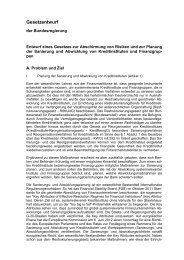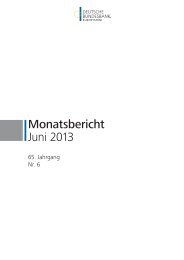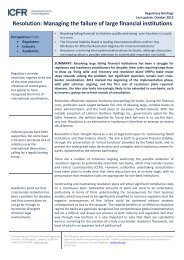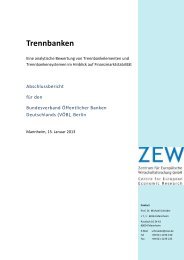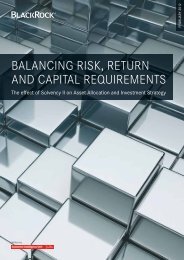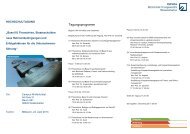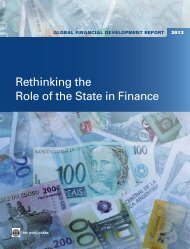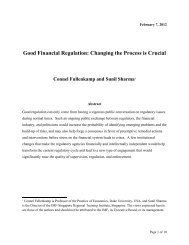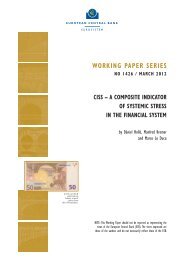by Jaromir Benes and Michael Kumhof - Financial Risk and Stability ...
by Jaromir Benes and Michael Kumhof - Financial Risk and Stability ...
by Jaromir Benes and Michael Kumhof - Financial Risk and Stability ...
Create successful ePaper yourself
Turn your PDF publications into a flip-book with our unique Google optimized e-Paper software.
© 2012 International Monetary Fund WP/12/���<br />
IMF Working Paper<br />
Research Department<br />
The Chicago Plan Revisited<br />
Prepared <strong>by</strong> <strong>Jaromir</strong> <strong>Benes</strong> <strong>and</strong> <strong>Michael</strong> <strong>Kumhof</strong><br />
Authorized for distribution <strong>by</strong> Douglas Laxton<br />
August 2012<br />
This Working Paper should not be reported as representing the views of the IMF.<br />
The views expressed in this Working Paper are those of the author(s) <strong>and</strong> do not necessarily represent<br />
those of the IMF or IMF policy. Working Papers describe research in progress <strong>by</strong> the author(s) <strong>and</strong> are<br />
published to elicit comments <strong>and</strong> to further debate.<br />
Abstract<br />
At the height of the Great Depression a number of leading U.S. economists advanced a<br />
proposal for monetary reform that became known as the Chicago Plan. It envisaged the<br />
separation of the monetary <strong>and</strong> credit functions of the banking system, <strong>by</strong> requiring 100%<br />
reserve backing for deposits. Irving Fisher (1936) claimed the following advantages for this<br />
plan: (1) Much better control of a major source of business cycle fluctuations, sudden<br />
increases <strong>and</strong> contractions of bank credit <strong>and</strong> of the supply of bank-created money.<br />
(2) Complete elimination of bank runs. (3) Dramatic reduction of the (net) public debt.<br />
(4) Dramatic reduction of private debt, as money creation no longer requires simultaneous<br />
debt creation. We study these claims <strong>by</strong> embedding a comprehensive <strong>and</strong> carefully calibrated<br />
model of the banking system in a DSGE model of the U.S. economy. We find support for all<br />
four of Fisher's claims. Furthermore, output gains approach 10 percent, <strong>and</strong> steady state<br />
inflation can drop to zero without posing problems for the conduct of monetary policy.<br />
JEL Classification Numbers: E44, E52, G21<br />
Keywords: Chicago Plan; Chicago School of Economics; 100% reserve banking; bank<br />
lending; lending risk; private money creation; bank capital adequacy;<br />
government debt; private debt; boom-bust cycles.<br />
Authors’ E-Mail Addresses: jbenes@imf.org; mkumhof@imf.org



